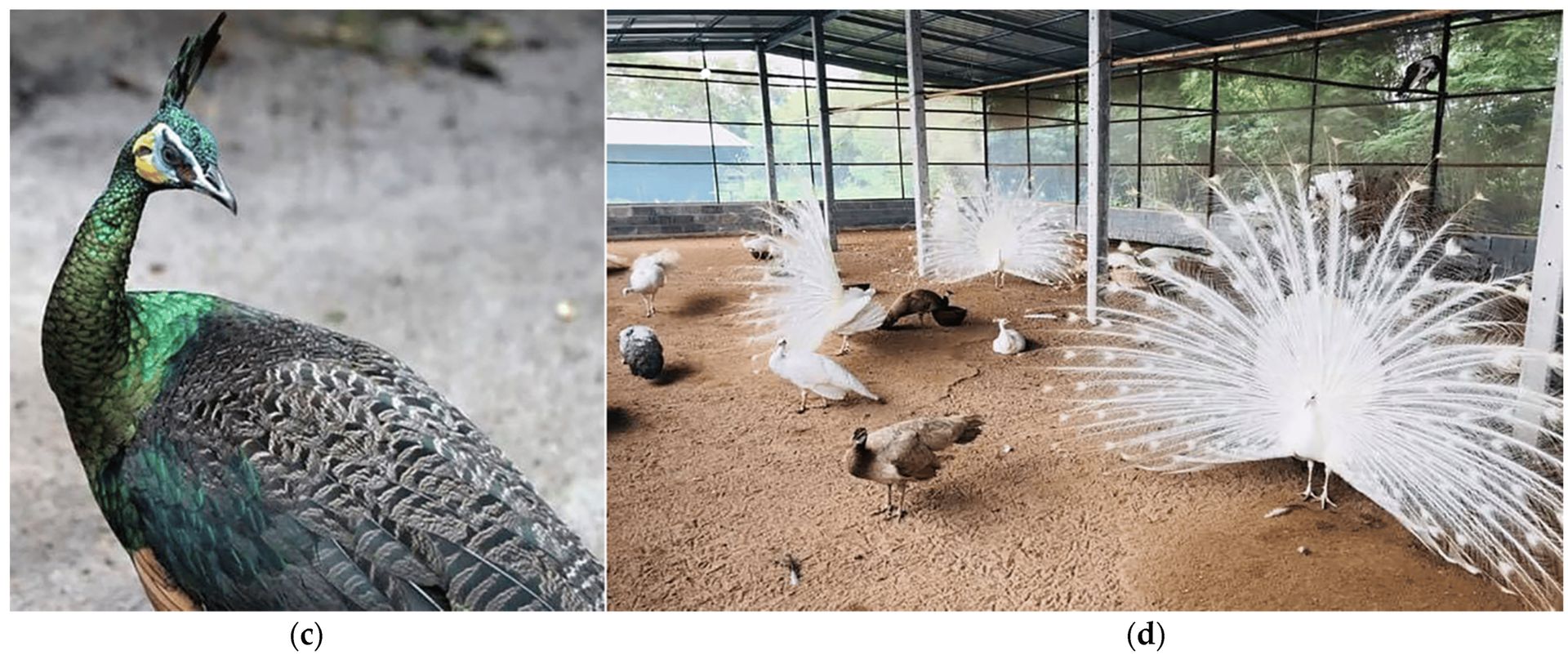

Highlight
ประมาณ 12% ของจำนวนประชากรสัตว์ปีกถูกคุกคามจนมีสถานะเข้าใกล้สูญพันธุ์ นกยูงไทยหรือนกยูงเขียวเป็นหนึ่งในสัตว์ปีกชนิดที่ใกล้สูญพันธุ์ เนื่องจากจำนวนประชากรลดลงมากจากหลายปัจจัยเช่น พื้นที่อาศัยถูกทำลาย การปนเปื้อนทางพันธุกรรมจากนกยูงอินเดีย การล่าเพื่อเอาขนและเนื้อเป็นต้น การรายงานครั้งนี้กล่าวถึงชีววิทยาของนกยูงไทยในมุมมองของกายวิภาคและเอ็มบริโอโลยีเชิงเปรียบเทียบ นอกจากนี้ยังกล่าวถึงความสำคัญของการใช้ประโยชน์ของเทคโนโลยีโอมิกส์ในสัตว์ปีกเพื่อเก็บไว้เป็นแหล่งข้อมูลทางพันธุกรรม และเทคโนโลยีเซลล์ต้นกำเนิดโดยเฉพาะเซลล์ต้นกำเนิดเหนี่ยวนำเพื่อประยุกต์ใช้ในการอนุรักษ์นกยูงไทยและสัตว์ปีกชนิดอื่นที่ใกล้สูญพันธุ์ต่อไป
ที่มาและความสำคัญ
สัตว์ปีกจัดอยู่ในกลุ่มที่มีจำนวนสิ่งมีชีวิตใกล้สูญพันธุ์และสูญพันธุ์ไปแล้วสูงเป็นลำดับที่สองของอาณาจักรสัตว์ เป็นที่น่าสังเกตว่าองค์กร IUCN จัดนกยูงไทยหรือนกยูงเขียวไว้ในรายชื่อบัญชีแดงของสิ่งมีชนิดที่ใกล้สูญพันธุ์ การรายงานครั้งนี้มุ่งเน้นถึงประโยชน์ของการประยุกต์ใช้เทคโนโลยีทางพันธุศาสตร์และการสืบพันธุ์เพื่อการอนุรักษ์สัตว์ปีกชนิดที่ใกล้สูญพันธุ์ เทคโนโลยีดังกล่าวยังสามารถใช้ทำนายแนวโน้มของจำนวนประชากรนกยูงไทยในป่าและช่วยในการผสมพันธุ์นกยูงไทยนอกเขตพื้นที่อาศัย นอกจากนี้การใช้ประโยชน์จากการเก็บข้อมูลและการวิเคราะห์ทางพันธุกรรมเป็นอีกทางหนึ่งในการช่วยอนุรักษ์สัตว์ปีกชนิดดังกล่าวในรูปแบบของการเก็บลำดับสารพันธุกรรมไว้เป็นธนาคารชีวภาพ อีกทั้งการวิเคราะห์ลำดับสารพันธุกรรมยังช่วยจำแนกนกยูงไทยแต่ละชนิดได้ถูกต้องเพื่อใช้เพิ่มจำนวนชนิดพันธุ์ การรายงานครั้งนี้ยังกล่าวถึงจีโนมิกส์สัตว์ปีกและการใช้เทคโนโลยีเซลล์ต้นกำเนิดเพื่อเป็นความหวังในการอนุรักษ์สัตว์ปีกชนิดที่ใกล้สูญพันธุ์เช่นนกยูงไทย และชนิดอื่นที่ถูกคุกคามจนมีสถานะที่เข้าค่ายใกล้สูญพันธุ์

Abstract
Aves ranks among the top two classes for the highest number of endangered and extinct species in the kingdom Animalia. Notably, the IUCN Red List classified the green peafowl as endangered. This highlights promising strategies using genetics and reproductive technologies for avian wildlife conservation. These platforms provide the capacity to predict population trends and enable the practical breeding of such species. The conservation of endangered avian species is facilitated through the application of genomic data storage and analysis. Storing the sequence is a form of biobanking. An analysis of sequence can identify genetically distinct individuals for breeding. Here, we reviewed avian genomics and stem cell approaches which not only offer hope for saving endangered species, such as the green peafowl but also for other birds threatened with extinction.
KEYWORDS: avian conservation, peafowl, green peafowl, avian genomics, avian stem cells
Citation: Intarapat, S.; Sukparangsi, W.; Gusev, O.; Sheng, G. A Bird’s-Eye View of Endangered Species Conservation: Avian Genomics and Stem Cell Approaches for Green Peafowl (Pavo muticus). Genes 2023, 14, 2040. https://doi.org/10.3390/genes14112040
RELATED SDGs:
15: LIFE ON LAND

ผู้ให้ข้อมูล: ผู้ช่วยศาสตราจารย์ ดร.สิทธิพล อินทรพัฒน์
ชื่ออาจารย์ที่ทำวิจัย: ผู้ช่วยศาสตราจารย์ ดร.สิทธิพล อินทรพัฒน์
แหล่งทุนวิจัย: This work was supported by the Japan Science Technology Agency (JST) e-ASIA joint research project grant JPMJSC19E5 and by a Biotechnology for Bird Conservation grant from Revive & Restore. O.G. was supported by the Ministry of Science and Higher Education of the Russian Federation, grant 075-15-2021-1344. W.S. and S.I. were supported by the National Research Council of Thailand, grant N33A640448.
ภาพถ่าย: ผู้ช่วยศาสตราจารย์ ดร.สิทธิพล อินทรพัฒน์
Tags: avian conservation, avian genomics, avian stem cells, green peafowl, peafowl
